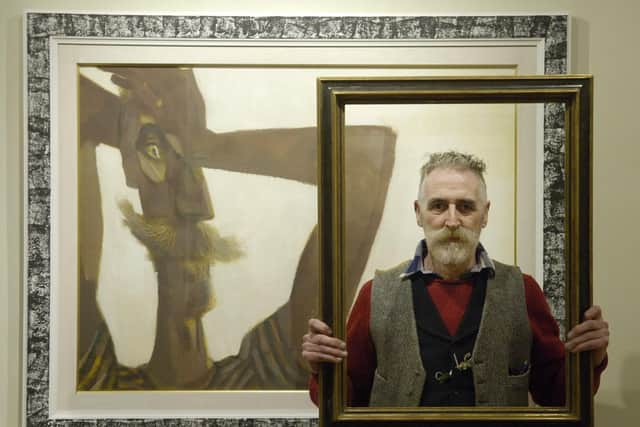Why John Byrne's astonishing creative genius and style was there from the first encounter - Joyce McMillan
It was a measure of John Byrne’s huge impact on Scotland’s cultural scene – on his own generation, and on those who followed – that many people can remember, with absolute precision, they moment when they first encountered his astonishing creative genius and style.
For some, that moment came in an encounter with his paintings, either his brilliant portraits of other familiar Scottish figures from Robbie Coltrane to Billy Connolly, or his magical and ever-varying series of self-portraits made throughout his life. Or it was the earlier paintings, in faux-primitive style, with which he famously launched his career by scamming the London art world into believing they had been painted by his father, Patrick Byrne, whom he characterised as a retired miner now living in a hut on Millport beach.
Advertisement
Hide AdAdvertisement
Hide AdAnd for others, the revelation came in the shared space of theatre; at the Traverse in the Grassmarket, where his three semi-autobiographical Slab Boys played premiered between 1978 and 1982, chronicling his time as an apprentice in the “slab room” at Stoddart’s Carpet Factory in Paisley. Or it was even earlier, when a version of The Slab Boys previewed at Byrne’s old alma mater, Glasgow School of Art, or in 1977, when his radio play Writer’s Cramp – a searing and hilarious view of the Scottish and British literary establishments as seen from Back Sneddon Street in Paisley – burst into live performance at the old Calton Studios during the Edinburgh Fringe, with Bill Paterson in supreme form as Byrne’s literary hero Frances Seneca McDade.


Whatever the place or art-form, though – and even if it was only a meeting with the inimitable Byrne himself, always the most cool and stylish figure in any gathering he attended – the impact was always the same; the sheer post-modern shock of encountering a mind so deeply and inimitably Scottish, and so drenched in the intimate detail of his youth in Ferguslie Park, and yet absolutely unwilling to defer to the notion the experience he portrayed, and the idioms in which he portrayed it, was in any way lower or more marginal in status than any received establishment language, either verbal or visual.
On the contrary, he believed the back streets of Paisley or any Scottish town had as good a claim to be the centre of the world as any other place on earth. And astonishingly, he had the the creative brilliance and fire-power to make it so, both through his visual imagery – he often designed and painted his own stage sets, as well as continuing to paint throughout his life – and through the dazzling language he put in the mouths of his stage characters, couched in the accents of the working class west of Scotland, but as rich in image and metaphor, in global awareness, and in complex rhythms and lethally witty detail, as any Shakespearean comedy.
It’s therefore no exaggeration to say that for many who were young in the 1970s and 1980s, the encounter with Byrne and his work changed their whole sense of what Scotland was, and could be; a place no longer defined by White Heather Club nostalgia, but bursting with streetwise creativity and wit, and capable of imagining and creating its own distinctive present and future.
And for Byrne, this was never a matter of formal politics; he rarely if ever picked sides, and viewed our home-grown political establishment with as much wry scepticism as any other. What he cared for, though, to the very end of his life, was the power of creative imagination to transform our view of the world; and to enable us – wherever we come from, wherever we begin – to make that world anew, and ever more vivid, funny and brilliant, in ways that empower us all.
Comments
Want to join the conversation? Please or to comment on this article.